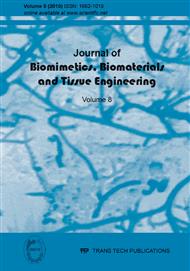p.1
p.9
p.23
p.35
p.45
p.79
p.91
Optical, Electrical and Photo-Electrical Characteristics of Bio-Polymeric Complex of Natural Chromatophore & Development of Non-Silicon Solar Cells
Abstract:
Gum Arabica, an Electro-Active Bio-Polymer (EABP) is employed to develop photosensitive bio-complexes with chromophore matter collected from natural flowers and chlorophyll from plant leaves. The photosensitivity and enhancement of electro-activity of the developed complex and nano-cluster doped specimens of the same are examined experimentally. The electrical, optical, and photoelectrical characteristics are also investigated experimentally. It has been observed that the electrical property is mostly mixed conducting and can be tailored. The photo electrical behaviour is found to be fascinating. The developed complex is capable of absorbing light by losing or gaining electrons. The application potential of the developed complex toward light harvesting processes is exploited to develop a non-silicon based solar cell. The electrical characteristics of the developed solar cells are studied. The results obtained are good when compared to those of existing solar cells.
Info:
Periodical:
Pages:
23-34
Citation:
Online since:
November 2010
Authors:
Price:
Сopyright:
© 2010 Trans Tech Publications Ltd. All Rights Reserved
Share:
Citation:



